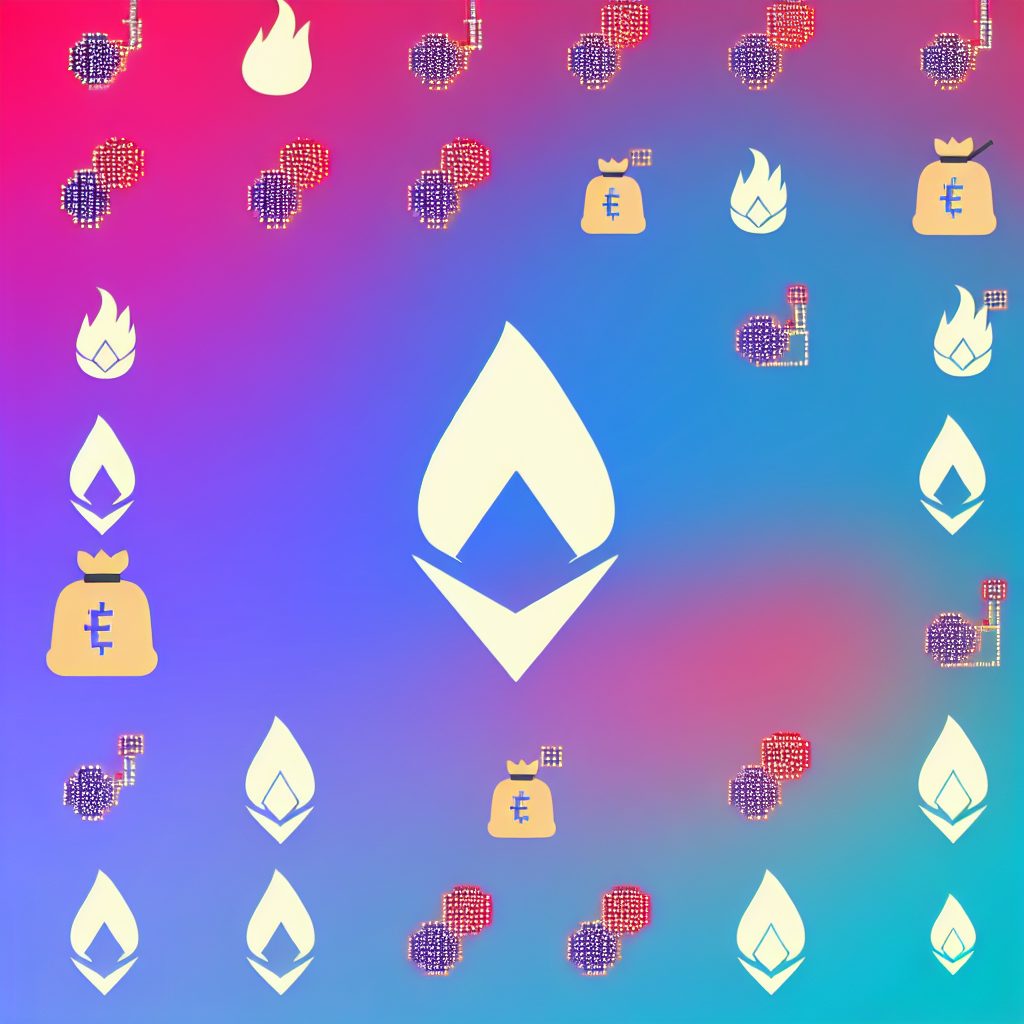Understanding Gas Wars in Ethereum
The Ethereum blockchain has revolutionized the way we think about decentralized applications and smart contracts. However, with its growing popularity, a phenomenon known as gas wars has emerged, significantly impacting transaction costs and user experience. This article delves into the intricacies of gas wars in Ethereum, exploring their causes, effects, and potential solutions.
What is Gas in Ethereum?
In the Ethereum network, gas refers to the unit that measures the amount of computational effort required to execute operations, such as transactions or smart contract executions. Each operation on the Ethereum blockchain requires a certain amount of gas, which is paid for in Ether (ETH), the native cryptocurrency of Ethereum.
Gas serves two primary purposes:
- It compensates miners for the computational resources they expend to validate transactions.
- It prevents spam attacks on the network by requiring users to pay for the resources they consume.
What Are Gas Wars?
Gas wars occur when multiple users compete to have their transactions processed by miners, leading to a surge in gas prices. This competition typically arises during periods of high demand, such as during popular NFT drops, token launches, or significant market events. When users set higher gas prices to prioritize their transactions, it creates a bidding war, driving gas prices even higher.
How Gas Wars Affect Ethereum Users
The impact of gas wars on Ethereum users can be profound:
- Increased Transaction Costs: Users may find themselves paying exorbitant fees to ensure their transactions are processed quickly.
- Transaction Failures: If users set gas prices too low in a competitive environment, their transactions may not be processed at all, leading to frustration and potential financial loss.
- Network Congestion: High gas prices can lead to network congestion, slowing down the entire Ethereum ecosystem and affecting all users.
Factors Contributing to Gas Wars
Several factors contribute to the occurrence of gas wars in Ethereum:

- High Demand for Transactions: Events like NFT launches or DeFi protocol updates can lead to a sudden spike in transaction requests.
- Market Speculation: Traders may rush to execute trades during volatile market conditions, increasing competition for transaction processing.
- Smart Contract Complexity: More complex smart contracts require more gas, leading to higher costs during peak times.
Real-World Examples of Gas Wars
Several notable instances of gas wars have occurred in the Ethereum ecosystem:
The CryptoKitties Craze
In late 2017, the launch of CryptoKitties, a blockchain-based game that allows users to buy, sell, and breed virtual cats, led to significant gas wars. The game’s popularity caused transaction fees to skyrocket, with some users paying hundreds of dollars in gas fees just to complete a transaction.
Popular NFT Drops
High-profile NFT drops, such as those from Bored Ape Yacht Club or NBA Top Shot, have also triggered gas wars. During these events, users often compete to secure limited-edition NFTs, resulting in inflated gas prices and transaction failures for those who do not act quickly.
Strategies to Mitigate Gas Wars
While gas wars can be frustrating, there are strategies users can employ to mitigate their impact:
- Timing Transactions: Users can monitor network activity and choose to execute transactions during off-peak hours when gas prices are lower.
- Setting Gas Limits: Understanding how to set appropriate gas limits can help users avoid overpaying for transactions.
- Using Layer 2 Solutions: Solutions like Polygon or Optimism can help reduce transaction costs and alleviate congestion on the Ethereum mainnet.
The Future of Gas Wars in Ethereum
The Ethereum community is actively working on solutions to address the challenges posed by gas wars. The transition to Ethereum 2.0, which aims to improve scalability and reduce transaction costs, is one such initiative. Additionally, the implementation of EIP-1559 has introduced a base fee mechanism that adjusts gas prices based on network demand, potentially stabilizing costs.
FAQs About Gas Wars in Ethereum
What causes gas wars in Ethereum?
Gas wars are primarily caused by high demand for transactions during events like NFT drops or market volatility, leading to competition among users to have their transactions processed quickly.
How can I avoid high gas fees?
To avoid high gas fees, consider timing your transactions during off-peak hours, setting appropriate gas limits, and exploring Layer 2 solutions that offer lower fees.
What is EIP-1559?
EIP-1559 is an Ethereum Improvement Proposal that introduced a new fee structure aimed at making transaction fees more predictable and reducing the volatility associated with gas prices.
Are gas wars unique to Ethereum?
While gas wars are most commonly associated with Ethereum due to its popularity and smart contract capabilities, similar phenomena can occur on other blockchains with high transaction demand.
Conclusion
Gas wars in Ethereum represent a significant challenge for users navigating the blockchain landscape. Understanding the mechanics behind gas and the factors that contribute to these bidding wars is crucial for anyone looking to engage with Ethereum effectively. As the ecosystem evolves, ongoing improvements and innovations will likely help mitigate the impact of gas wars, making the Ethereum network more accessible and user-friendly.
For the latest updates on cryptocurrency news and price tracking, consider visiting Bitrabo. Stay connected with me on social media: X, Instagram, and Threads.
Disclaimer: This article is for informational purposes only and should not be considered financial advice. Always conduct your own research before making investment decisions.
The Crypto Watchlist of the Week 🔎
Subscribe to receive expert-curated projects with real potential—plus trends, risks, and insights that matter. Get handpicked crypto projects, deep analysis & market updates delivered to you.


